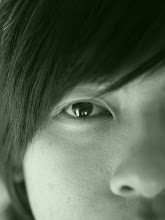Shooting digital is convenient but there is still advantages of shooting film as I have already mentioned in my previous post. An interesting one is that, we don't have to replace our cameras as sensor technologies improve. Film can even be used on old bodies from the early 90s and the image quality can be still the same as any modern film camera. Film cameras can last for generations, not so for digital, as their sensor becomes obsolete, new replacements will supersede the old ones.
You can choose between scanning film or scanning prints. These are the two ways you can digitise film and scanning film is the cheaper option but are there any benefits of scanning prints?
This comparison is mainly to see which is the better way to work and not about comparing image quality, as original prints are often better looking because scanned prints lose details through the process. We only want to scan prints for archiving purposes or to post images on the web.
I highly recommend a flatbed scanner like the Epson V500, V600 or V700 to do film scanning as they are affordable, versatile and offers in-built dust reduction. Flatbed often have problems with dust, be it on the films or on the scanner, so an auto dust removal included in the scanning software would be very useful to reduce the scanning workload. A dedicated scanner can yield better results but they are normally more expensive but the Plustek 7600Ai is the cheapest dedicated 35mm film scanner, albeit a bit fiddly to use as you have to manually feed the slides.
I got my prints from the lab so I would not know what printer is used. I am only using the Epson V300 for scanning these pictures but this model does not offer auto dust removal. So, here are some sample scans comparisons between film scanning and print scanning:

Print Scan

Film Scan

Print Scan

Film Scan

Print Scan

Film Scan

Print Scan

Film Scan
From what you can see, there is less cropping when you scan negatives, somwhow the lab has cropped some areas off.
Also, there seems to be more detail that exists in the scanned films as compared to the scanned prints.
The dynamic range is better in prints as printers can only print certain amount of dynamic range, much less than what our monitors can show.
Conclusion: (a) Invest on a good flatbed and scan negatives for digital scans. (b) Use darkroom printing for film prints to get the best results.


0 comments:
Post a Comment